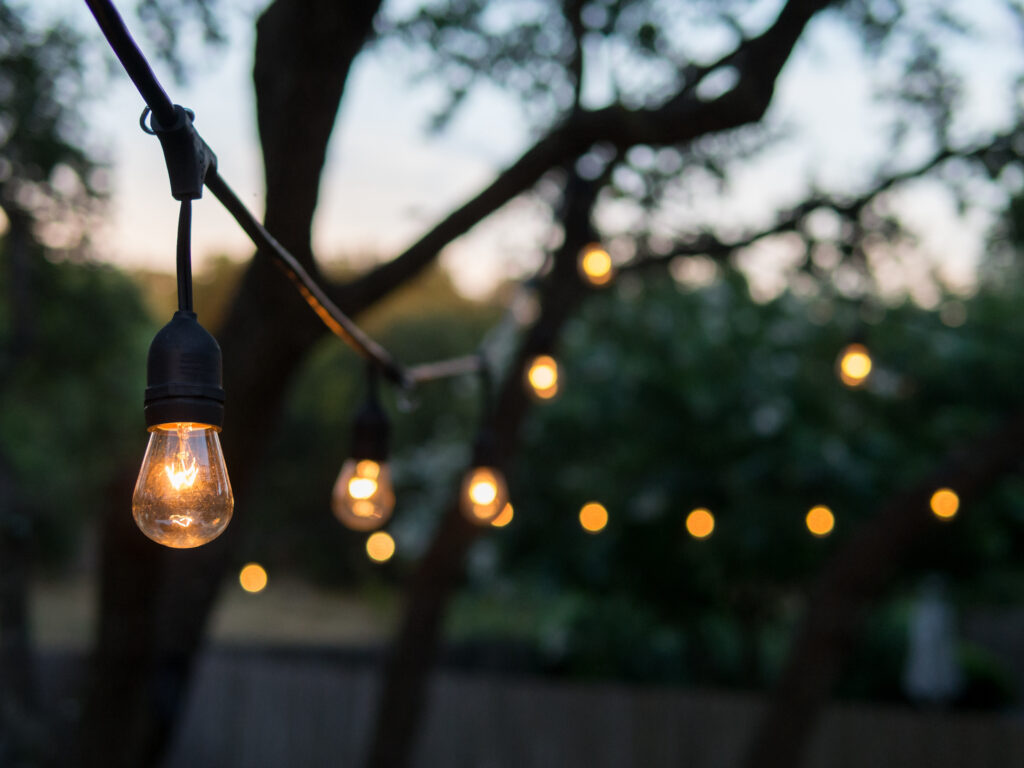It might seem that simple string lights won’t use much electricity, but what if you’re hanging hundreds or even thousands of them?
It can cost as little as $0.14 per day on average to run 1,000 string lights, assuming they’re LED and they use around 1.1 kWh per day. However, the bigger and more powerful ceramic string lights can cost you as much as $1.62 per day to run – you can work out the hourly rate from there.

Read on to learn more about string lights, the different types of lights you can use, and how much they really cost to run.
Light Up Your Life
String lights are a fantastic way to brighten up any environment, regardless of the occasion. While they’re more commonly used around Christmas time, there’s nothing stopping you from putting them up in your garden, around your home, or even using them to light up a wedding.
They’re attractive, they can create a relaxing ambiance, and they’re almost always cheap to run. However, that last point does depend entirely on the type and amount of string lights you use, as some are obviously more expensive than others.
It does also depend on the type of setting the lights are being used in, as the cost of running them at a wedding venue usually won’t be considered. They’ll be hung for just a few hours, and it’s extremely unlikely that the bride and groom will be made to pay for electric usage.
Although, that is where you’re likely to find the most lights in one close environment, as some wedding parties will drape the entire venue in twinkling lights. When this practice is followed, tens of thousands of string lights will be used.
But what if you’re just hanging a thousand lights around your Christmas tree, or draping a few hundred string lights throughout your garden? If you pick the right kinds of lights, you’ll hardly notice the monthly cost they accrue in electric consumption.
For example, traditional mini string lights – the type you often see used during festive periods – can cost as much as $1.23 per day of continuous usage. That’s assuming you’re using 1000 lights, and you’re leaving them on every minute of the day.
Now, if you were to switch them out for a more modern strip of LED string lights, the cost of running them drops dramatically. For 1000 lights, it can cost as little as $0.14 per day to keep them running for every passing second.
However, if you use the brightest, most powerful ceramic string lights, you can expect to pay a considerable amount more. This option is by far the most striking in terms of actual lighting, but just 100 of these lights will cost you around $1.62 per day to run.
How To Bring The Cost Down
Really, it’s quite simple – in fact, you shouldn’t honestly need a guide to understand how to save money where your electricity is concerned. After all, the easiest way to save money on the cost of lights is to just switch them off when they don’t need to be on.
If you’re putting up string lights in your garden and plugging them into the mains, do they really need to be on throughout the day? To that end, you should try to purchase lights that come with a timer or use a timer switch in your home to have them come on automatically at whatever time you set.
Further, if you’re putting up lots of lights, use the ones that are inherently energy-efficient, like LED lights. They’re just as good, they’re longer-lasting, and they’ll save you a considerable amount on your electricity bill.
Finally, and it’s another simple one, but you should just try to use fewer lights. Think about it like this, if a municipality throws up 10,000 ceramic lights at Christmas, their daily cost to run them would exceed $160 – the more you hang, the more you’ll pay.
There’s such a thing as overkill where festive decorations are concerned, particularly for a single home. Sure, they might look nice and people might like to marvel at them, but you can achieve as attractive an end result with fewer lights – it’s simple.
Take our advice, and keep the cost of your string lights low by using fewer lights, opting for a more energy-efficient bulb, and turning them off when you don’t need them to run.
